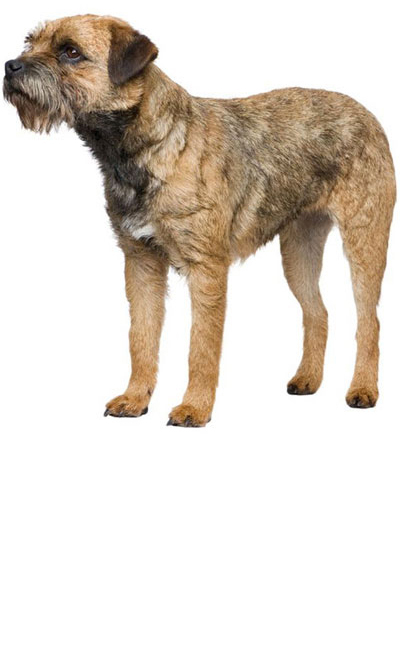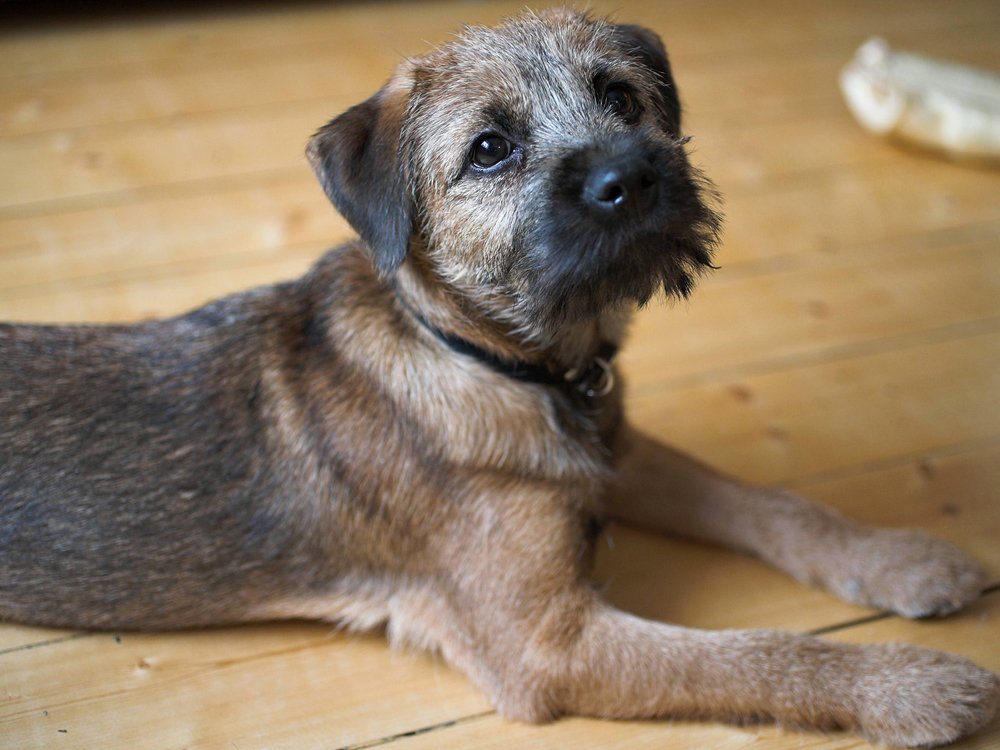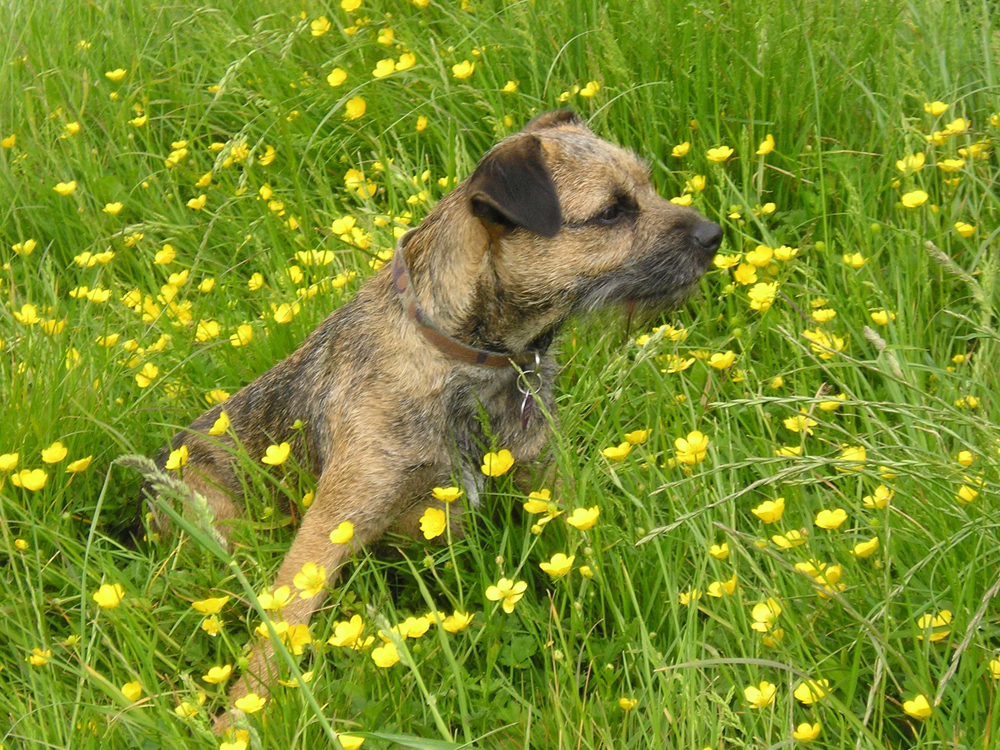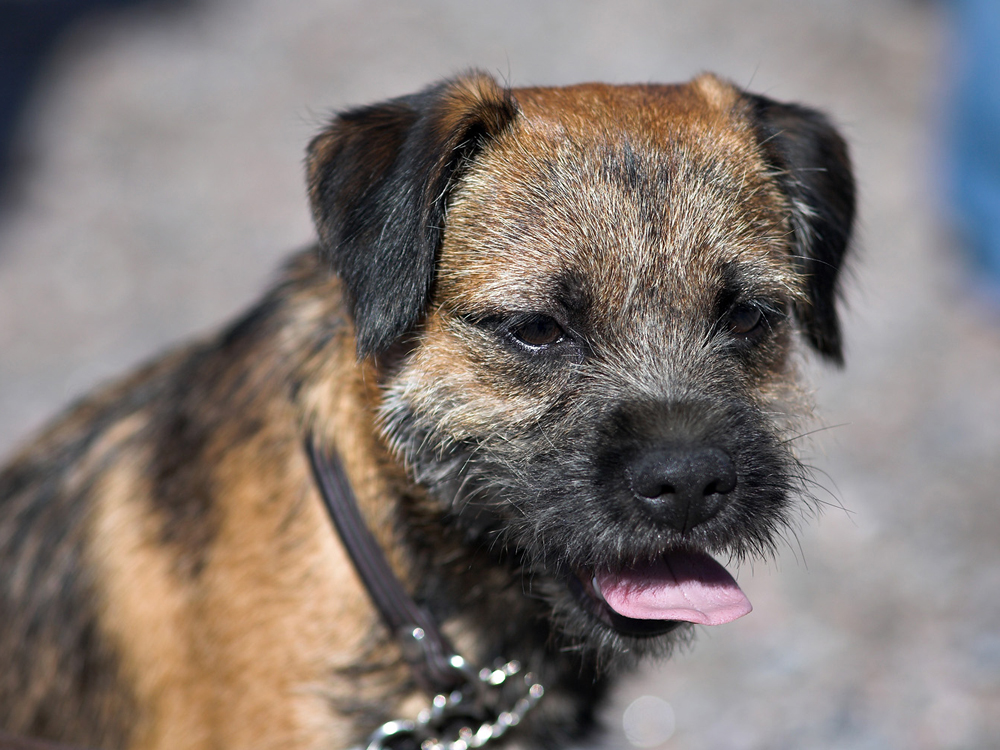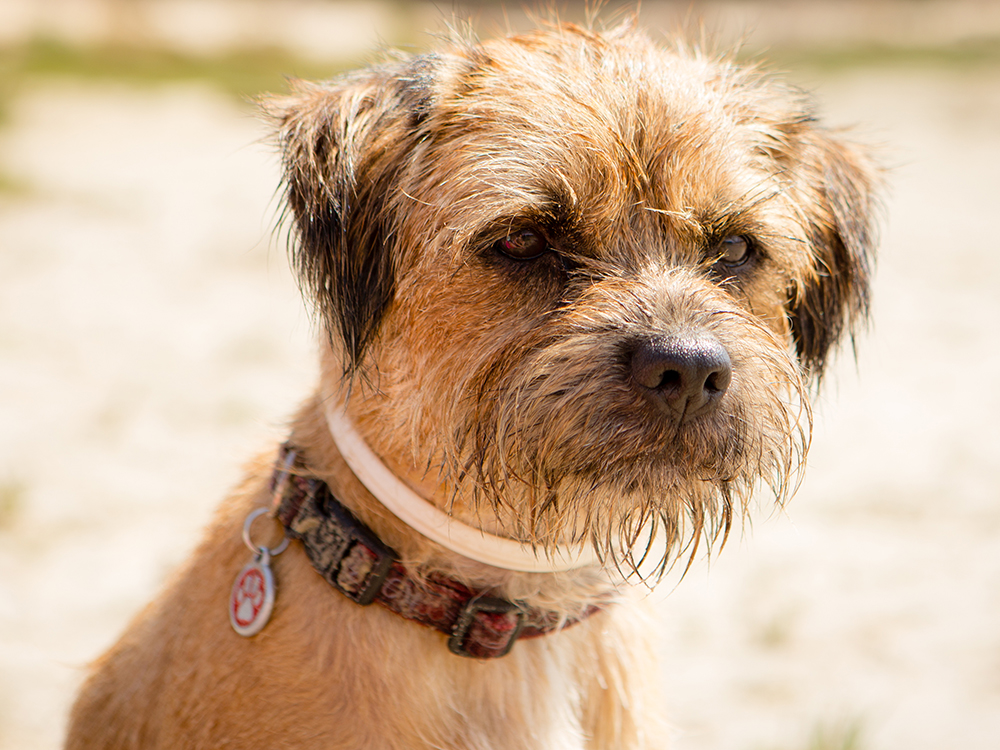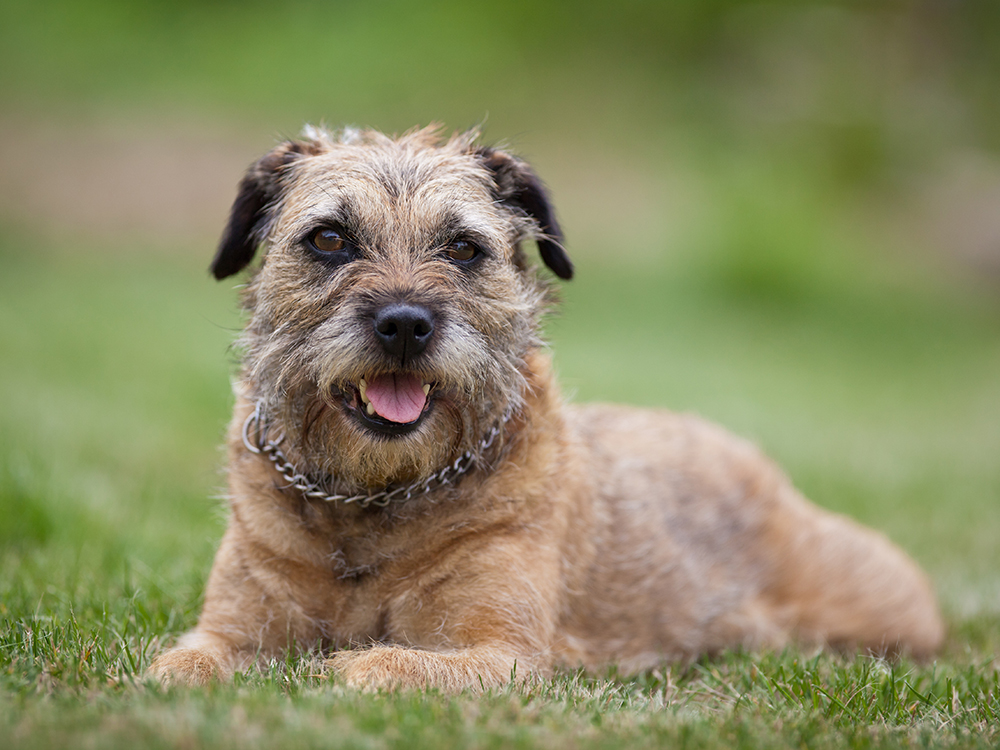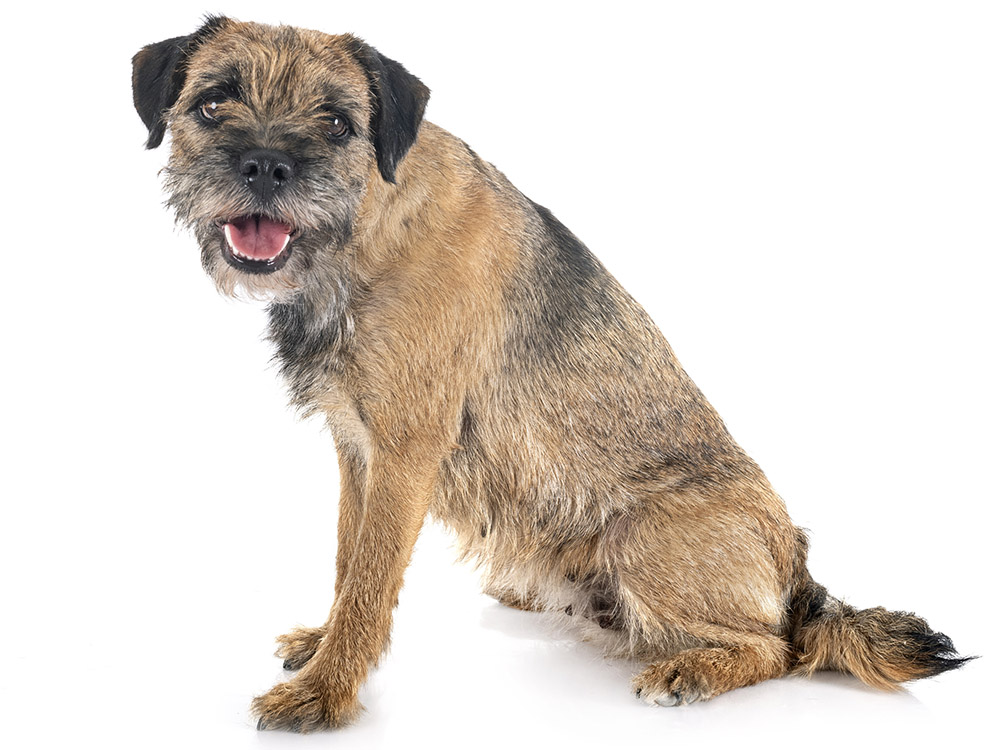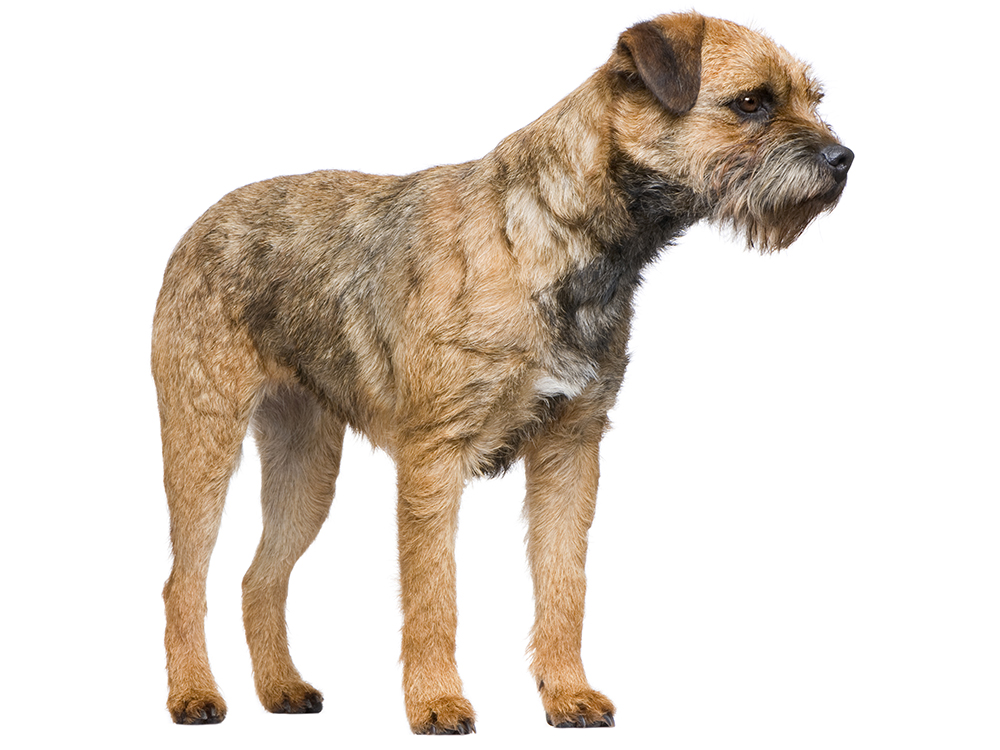
Border Terrier Breed Pictures
Vital Breed Stats
| Height: | 33 - 40 cm M | 33 - 40 cm F |
| Weight: | 5 - 7 kg M | 5 - 7 kg F |
| Breed Group: | Working Dog Group |
| Life Expectancy: | 13 - 15 years |
| KC Registered: | No |
Breed Characteristics
| Size: |  |
| Grooming: |  |
| Exercise Level: |  |
| Trainability: |  |
| Barking Level: |  |
| Good with Children: |  |
| Good with other pets: |  |
| Affectionate: |  |
| Protective: |  |
| Cost to Keep: |  |
Give a thumbs up if you love the Border Terrier

0
More About the Breed
History
The Border Terrier origin dates back to the 18th century in northeast England, near the border of Scotland. Borders were bred to help farmers hunt foxes and vermin that threatened the farm stock. Borders’ small build is ideal for flushing prey out narrow hiding places. They also have tremendous amount of energy and stamina.
Borders were formerly referred to the "Conquetdale Terrier” or “Redesdale Terrier” after the area where they developed and evolved. However, by the late 1800s, they were known as Border Terrier because of its long history in participating in the Border Hunts in Northumberland.
The 19th century marked the period when Border Terriers proved to be invaluable when foxhunting became a favourite sport. Their stamina and tenacity in tracking, flushing foxes are highly praised. In 1920, the Border Terrier was recognised by The Kennel Club, which is the same year The Border Terrier Club was also created.
Today, Border Terriers are still among the popular breeds in the UK that excel in competing at Championship levels.
Appearance
Border Terriers are small-sized dog with the classic terrier appearance. The dog weighs 11 to 15 pounds and stands at 28 to 36 centimetres at the withers. Borders are distinguished by its otter-like head, broad skull and strong-looking muzzle. They have small and sparkling eyes that are keen and alert. Border Terriers have short, dark muzzles, black noses, and small V-shaped ears.
When it comes to the coat, Border Terriers sport a double coat. The topcoat is coarse, wiry and weather-resistant while the undercoat is short, thick and soft. Acceptable colours according to the Kennel Club breed standards are red, wheaten, grizzle and tan, or blue and tan.
Grooming
Often the coat of Border Terrier requires hand-stripping to remove dead hair, especially during autumn and spring when they shed more. Outside that period, weekly brushing will suffice for some to get rid of loose hair. Borders rarely need a bath, unless it's necessary.
Grooming regimen also includes making sure the paws are cleaned, nails trimmed once or twice a month, and Border's teeth are brushed at least twice or thrice a week to remove tartar build-up. Also, check and clean the ears. Make sure there are no signs of infection such as redness or inflammation.
Temperament
Borders are good-natured and friendly dogs. They are affectionate, intelligent and sociable. Training is easy because they are obedient and quick learners that they can easily pick up cues on things their owners like or don't like. They are highly-active dogs that need to be kept busy to be truly happy. Their instinct to chase down prey remains strong, which makes them love the outdoors more.
On the flip side, Border Terriers are also stubborn and can even quickly pick up bad habits if not properly trained. Sometimes their strong hunting instinct will overpower any command, and they will just go and follow where it tells them. Knowing this, it is crucial that homes, where Borders will live, have secure fenced-yard or back garden or else they will take any opportunity to escape.
Intelligence
The Border Terrier also often suffers from separation anxiety and hates being left alone for any length of time. Excessive barking is its way of showing its displeasure or catching your attention. However, it can be trained to only bark when it's necessary provided that training starts at a young age.
The Border is great with kids, but it can be a bit hyperactive for smaller children. As with any other dog breed, it is vital for playtime to be supervised to avoid any accidents or unintentional injuries. The Border Terrier tends to get along well with other dogs and cats, but not with smaller pets such as mice, squirrels, hamsters, and birds. Its prey drive is high that it'll likely end up chasing or killing small animals.
Nutrition
- Senior and less active: up to 430 calories daily
- Typical adult: up to 480 calories daily
- Physically active: up to 535 calories daily
Feeding
Health
Exercise
Cost of Ownership
When you buy a Border Terrier, you must be prepared for financial setbacks. Owning a dog is a huge responsibility that literally can cost you. For a Border Terrier puppy, for example, you will have to pay somewhere from £500 to £800 or more if you want to buy a well-bred pedigree puppy.
To offset future veterinary costs for common ailments, select the best pet insurance. A basic cover to insure a Border will cost around £17 a month, while a lifetime cover or policy is about £40 a month. Of course, the latter offers more buffer to your budget, especially for special treatments. However, that will depend if the insurance covers the ailment or health problem. Other than vet bills covered by insurance, you will also have to spend for vaccinations, boosters, neutering and regular health checks, which can quickly add up to £800 a year.
As for food, be ready to shell out £25 to £35 a month for high-quality dog food. You also have to buy dog supplies and equipment such as beds, collars, leash etc. to make your Border Terrier more comfortable at home. Remember you are not only adding a pet but a real family member.
Is a Border Terrier Right for You?
- The Border Terrier is very affectionate and loving.
- It is also quite mischievous and an expert escape artist.
- Borders are intelligent and highly trainable.
- They are easy to groom outside the shedding season.
- Borders have a high prey drive and can be a bit aggressive with small animals.
- They are prone to suffer from separation anxiety.
